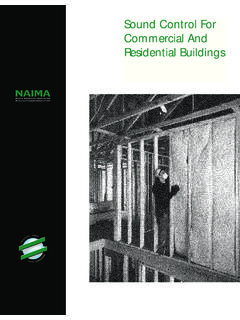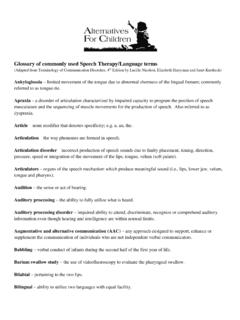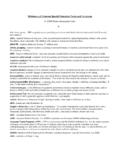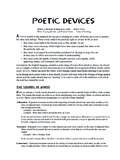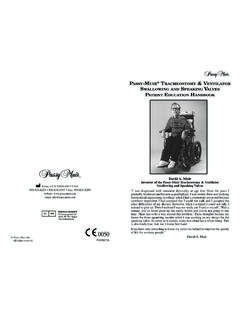Transcription of Sound Control for Commercial and Residential Buildings ...
1 Sound Control ForCommercial AndResidential BuildingsHow Noise Effects UsUnwanted Sound ornoise that travelsfrom room to room,from home to home, or office tooffice, may have a direct impacton people s notions of privacy,as well as their work noise produced by appli-ances, piping, heating and air-conditioning systems, phones,radios,TVs and talking areamong the major reasons peopleare dissatisfied with the privacyfound in homes or office , external noisessuch as traffic, sirens andextreme weather conditions areequally disturbing.
2 Designingstructures to Control noise effec-tively can make homes andoffices much more pleasantplaces in which to live or Of Contents Methods Of Sound Control 1 Sound Transmission Class (STC) And Sound Control 1 The Effects Of Insulation Thickness And Density On STC Ratings 2 Controlling Impact Noise 2 Improving Office To Office Sound Reduction 2 Controlling Exterior Sounds 3 Examples Of Ways To Construct Walls AndFloors/Ceilings To Achieve Desired STCs 4 Sound Isolation Design Criteria5 Guide Specification for Fiber Glass Acoustical Insulation7 Typical Wall AssembliesSingle Wood Stud Walls 8 Staggered Wood Stud Walls 9 Double Wood Stud Walls 10 Metal Stud Walls 11 Exterior Walls 12
3 Typical Floor/Ceiling Assemblies14 Recommended Construction Methods for Controlling Sound 15 Glossary 20 Bibliography 211 This Sound Control Guide recommends ways toconstruct walls and other assemblies using fiber glassinsulation to help provide quality noise North American Insulation ManufacturersAssociation (NAIMA) developed these recommenda-tions based on the results of numerous acoustical testsusing American Society for Testing and Materials(ASTM) methods.
4 However, the recommendations arepresented here solely as a guide. NAIMA cannot guar-antee, does not represent or warrant, and assumes noresponsibility for building design or constructionresults based on information provided in this bookletbecause many other factors including overall designand workmanship are outside its Of Sound Control Noise is unwanted Sound that is transmitted by vibra-tion through air, walls, floors or ceilings. In a home oroffice, there are three ways to Control Sound transmission.
5 Increase the mass of partitions Break the path of vibration Cavity the mass of walls and other structures canpresent a problem in lightweight construction becausethe increased weight may not be structurally practical oraesthetically pleasing, not to mention more the vibration path commonly calleddiscontinuous construction offers a practical method ofreducing Sound transmission by as much as 6 to 10 absorption, which uses fiber glass insulationto fill the space in walls and floors/ceilings, can furtherimprove performance of discontinuous constructionsby 5 to 15 Transmission Class (STC)And Sound Control STC ratings are a measure of the effectiveness of a givenpartition construction in reducing airborne Sound trans-mission.
6 Because of the frequency range covered (125-4000 Hz), STC ratings are best used to evaluate speechprivacy for partitions and floors/ceilings separating adja-cent offices, rooms in one and two family dwellings, hospi-tal patient rooms, classrooms, dormitories, apartments,courtrooms, small conference rooms, more extensiveacoustical analysis should be obtained from an acousticalengineer when isolating Sound from locations such asmusic practice rooms, recording studios, large conferencerooms and mechanical equipment Based On Lab TestsSTC ratings are based on laboratory tests conductedunder ideal construction conditions.
7 Partition manufac-turers acknowledge that the field STC of a partition canbe up to 15 - 20 points lower than laboratory valuesdepending on the quality of detailing and , the importance of communication betweenthe design team and the construction team cannot And Sound Transmission ClassThe decibel (dB) is used to express Sound intensityor more intense a Sound , the higher thedB Sound transmission class (STC) is anumerical rating of the ability of a wall, floor/ceilingassembly or any other building element such as adoor or window to minimize Sound higher the STC rating the more the Sound isblocked or reduced by the building element (See Table1).
8 For party walls or walls separating dwelling units,an STC of 50 is considered barely adequate forproviding privacy. STCs above 55 are required toprovide acceptable 1 STC RatingsSound Noise TransmissionSpeech ControlClass (STC)Audibility*Rating15 to 25 Normal speech to 35 Loud speech easilyMarginalunderstood. Normal speech 50% to 45 Loud speech 50% Goodunderstood.
9 Normal speechfaintly heard, but not to 55 Loud speech faintly heard,Very Goodbut not speech usually and upLoud speech usually inaudibleExcellent*Given a typical background noise level of 30 dB on the listening sideFactors That Degrade PerformanceThe presence of flanking paths, interconnectingductwork, non-airtight edge joints, inadequate doorand window constructions, untreated pipe andconduit penetrations, etc., all degrade the expectedperformance of a Sound rated properattention to construction details are followed, fieldSTC values can be equal to or even greater than labo-ratory Between Lab TestsNot UnusualPartitions with STC ratings within 1-2 points(1-2 dB) of the listed criteria would still be accept-able given the anticipated tolerances in repeattests.
10 In fact, differences between testing labs of 2-5 dB on identical test configurations are notunusual. (Subjectively, the human ear wouldconsider a 1-2 dB change as nondiscernible at best, which is insignificant.)STC Requirements Are From AIAThe STC requirements in Table 3 (pages 5-6) are fromthe American Institute of Architects (AIA) and assumeacceptable background noise levels on both sides ofthe construction assembly. Normal background noiseon the listening side of a partition has the effect ofmasking transmitted Sound that might otherwise beobjectionable.

